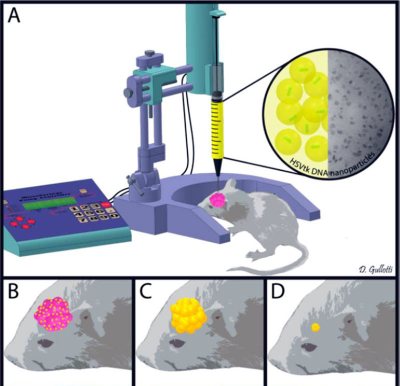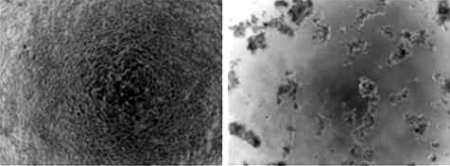Glioma is one of the most lethal human cancers, with a five year survival rate of just 12%, and no reliable treatment. Advances in the understanding of the molecular processes that cause these tumors has resulted in therapies aimed at delivering specific genes into tumors — genes that make proteins to kill or suppress the growth of the tumor. Currently this approach relies heavily on using viruses to deliver the
«Efforts to treat glioma with traditional drug and radiation therapies have not been very successful," says Jessica Tucker, Ph. D., NIBIB Director for the Program in Gene and Drug Delivery Systems and Devices. «The ability to successfully deliver genes using these biodegradable nanoparticles, rather than potentially harmful viruses, is a significant step that reinvigorates the potential for gene therapy to treat deadly gliomas as well as other cancers.»
Jordan Green, Ph. D., of the Johns Hopkins University School of Medicine Biomedical Engineering Department and a senior author of the work, and his international team describe their findings in the February 24 issue of ACS Nano.1 The collaborators include colleagues from the Johns Hopkins University School of Medicine Departments of Neurosurgery, Oncology, Ophthalmology, and Pathology, as well as Tang Du Hospital in China, University of the Negevin, Israel, and the Instituto Neurologico C. Besta in Italy.
Biodegradable nanoparticles have recently shown promise as a method to deliver genes into cells. Their use for delivery avoids many of the problems associated with viral gene delivery. To demonstrate virus free delivery, the first goal of the group was to develop a nanoparticle that could efficiently carry DNA encoding a gene known as HSVtk into cells. The HSVtk gene produces an enzyme that turns the compound

Scheme for nanoparticle gene therapy1
A. Nanoparticles carrying DNA encoding HSVtk are injected into rat gliomas
B.
C. The nanoparticles make thymidine kinase, which is spread throughout the tumor (yellow)
D. Ganciclovir, delivered into the rat’s blood system, reacts with the thymidine kinase to kill and shrink the tumor.
A number of polymer structures were tested for their ability to deliver DNA into two rat glioma cell lines. Among the many polymers tried, the one known as PBAE 447 was found to be the most efficient in delivering the HSVtk gene into the cultured rat glioma cells. Furthermore, when combined with ganciclovir, the
Next, the gene therapy system was tested in live rats with brain gliomas. Because it is important that the nanoparticles spread throughout the entire tumor, they were infused into the rat gliomas using
To test the
«The results provide the first demonstration of a successful
Nanoparticles injected into rat brain with convection enhanced delivery (CED) were able to spread throughout the entire tumor.1
A. Brain slice shows rat glioma (purple) in upper left
B. Test nanoparticle carrying a fluorescent protein is spread completely through the tumor after injection using CED.

In the future, the investigators envision that doctors would administer this therapy during the surgery commonly used to treat glioma in humans. They are also interested in testing the ability to deliver other

Rat glioma cells treated in culture. Left: Ganciclovir alone has no effect on glioma cells. Right: Glioma cells killed by combination of ganciclovir and HSVtk-encoding nanoparticles.
The work was supported by the National Institutes of Health through the National Institute of Biomedical Imaging and Bioengineering grant R01EB016721 and a grant from the National Cancer Institute.
http://www.nibib.nih.gov/


